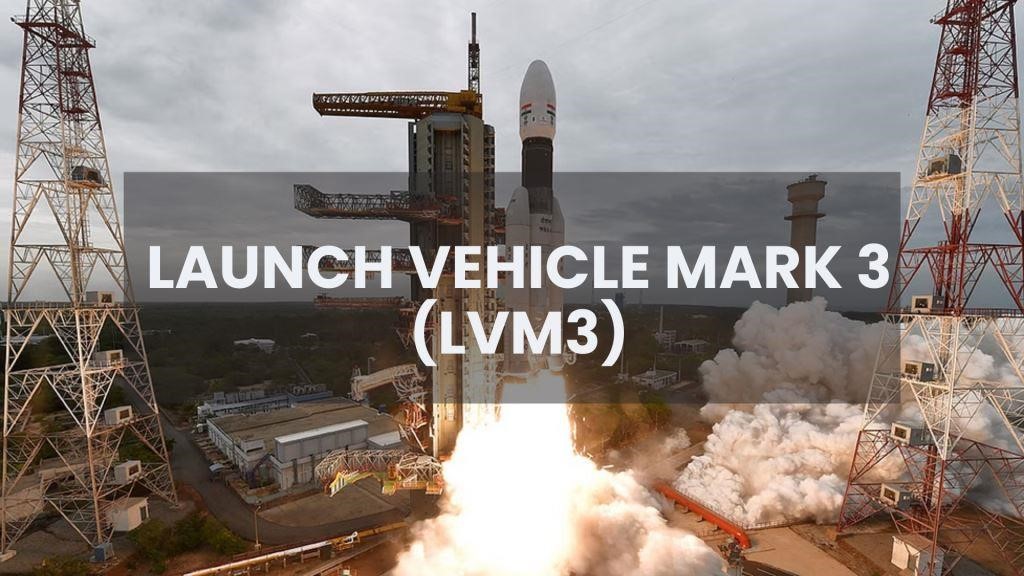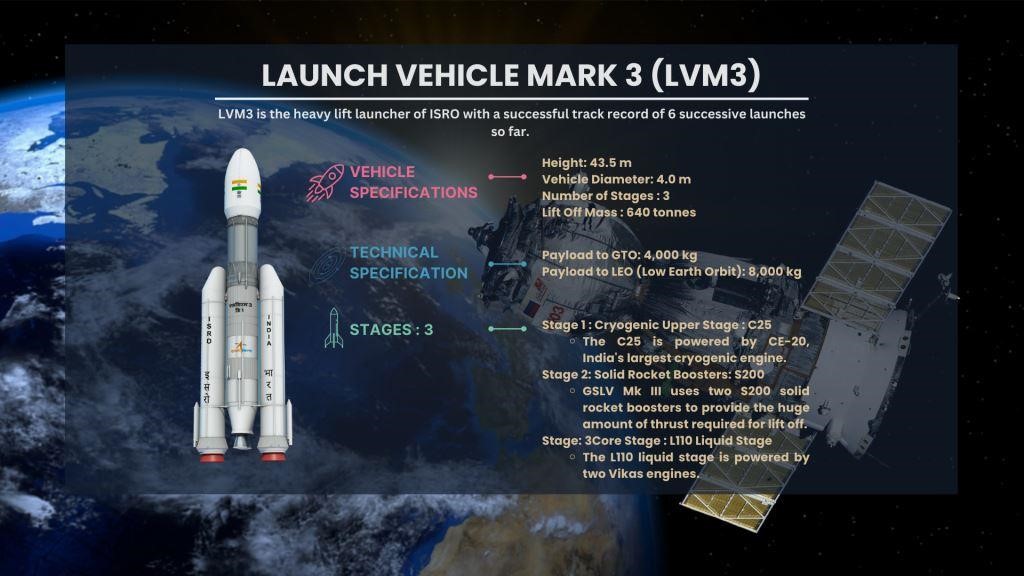27 Mar Launch Vehicle Mark 3 (LVM3)
Launch Vehicle Mark 3 (LVM3)
This article covers “Daily Current Affairs for UPSC” and the topic details Launch Vehicle Mark 3 (LVM3). On Sunday 27th March 2023, ISRO launched Launch Vehicle Mark 3 (LVM3), India’s heaviest rocket carrying 36 satellites of UK-based One-Web. This topic “ LVM3” has relevance in the Science and Technology section for the UPSC CSE exam.
Relevance of Launch Vehicle Mark 3 (LVM3)
For Prelims:
- Features of Launch Vehicle Mark 3 (LVM3)
- Other launch vehicles developed by ISROFor Mains:
- GS 3: Science and Technology
- Technological feats achieved by ISRO over the years
- Importance of Launch Vehicle Mark 3 (LVM3)
Why in the news?
Indian heavy lift rocket Launch Vehicle Mark 3 (LVM 3) successfully carried 36 satellites weighing a total of 5.8 tonnes to outer space. The rocket took off from the launch pad at the Satish Dhawan Space Centre in Sriharikota.
About OneWeb Gen-1
OneWeb is a network providing worldwide communication connectivity, utilizing a constellation of satellites in Low Earth Orbit (LEO) to achieve this goal. A major investor and shareholder in OneWeb are India’s Bharti Enterprises. The current launch marks the 18th for OneWeb, and the third for this year, bringing the total number of satellites in its constellation to 618. This launch is a significant milestone for the company, as it marks the first time an LEO operator has achieved the number of satellites necessary for global service. OneWeb is now poised to commence its global coverage shortly.
About Launch Vehicle Mark 3 (LVM3)
LVM3 is a three-stage vehicle with two solid strap-on motors, one liquid core stage (L110), and a cryogenic upper stage (C25).

Launch Vehicle Mark 3
- Vehicle Specifications
Height: 43.5 m
Vehicle Diameter: 4.0 m
Heat Shield (Payload Fairing) Diameter: 5.0 m
Number of Stages : 3
Lift-Off Mass: 640 tonnes
- Technical Specification
- Payload to GTO: 4,000 kg
Launch Vehicle Mark 3 (LVM3)will be capable of placing the 4-tonne class satellites of the GSAT series into Geosynchronous Transfer Orbits. - Payload to LEO (Low Earth Orbit): 8,000 kg
The powerful cryogenic stage of LVM3 enables it to place heavy payloads into Low Earth Orbits of 600 km altitude. - Stages – 3
- Cryogenic Upper Stage: C25
The C25 is powered by CE-20, India’s largest cryogenic engine, designed and developed by the Liquid Propulsion Systems Centre.
– Engine: CE-20
– Fuel : 28 tonnes of LOX + LH2
- Solid Rocket Boosters: S200
LVM3 I use two S200 solid rocket boosters to provide the huge amount of thrust required for lift-off. The S200 was developed at Vikram Sarabhai Space Centre.
– Booster Height: 25 m
– Booster Diameter : 3.2 m
- Fuel: 205 tonnes of HTPB (nominal)

LVM3
Core Stage: L110 Liquid Stage
The L110 liquid stage is powered by two Vikas engines designed and developed at the Liquid Propulsion Systems Centre.
- Stage Height: 21 m
- Stage Diameter: 4 m
- Engine : 2 x Vikas
- Fuel: 115 tonnes of UDMH + H2O
Significance of Launch Vehicle Mk 3
It is also known as GSLV Mk III (Geosynchronous Satellite Launch Vehicle Mark III) and is a significant achievement for India’s space program. Here are some of the reasons why:
- Heavy lift capability: Launch Vehicle Mark 3 (LVM3) is the heaviest and most powerful rocket that India has ever built. With a lift-off weight of 640 tons, it can carry payloads up to 4,000 kg to Geosynchronous Transfer Orbit (GTO) and up to 10,000 kg to Low Earth Orbit (LEO). This heavy lift capability makes it an essential tool for launching large satellites and missions to the Moon and Mars.
- Indigenous technology: The development of LVM3 represents a significant achievement for India’s space program because it relies on indigenous technology. The rocket uses an entirely new cryogenic engine that was developed in India, making India one of the few countries in the world to have the technology to build and launch cryogenic engines.
- Reduced dependency on foreign launch vehicles: Before the development of Launch Vehicle Mark 3 (LVM3), India was dependent on foreign launch vehicles to launch its heaviest satellites. Now, with the capability to launch heavier payloads using indigenous technology, India has reduced its dependence on foreign launch vehicles.
- Strategic importance: LVM3 has strategic importance for India’s defense and communication needs. It can help India to launch advanced surveillance and communication satellites, which are critical for national security and defense.
Source:
Daily Current Affairs for UPSC
There are several benefits of reading daily current affairs for the UPSC examination. If any aspirant would like to enhance their general knowledge and pass the prelims, mains, and interview examination, he/she should read current affairs regularly. Here, Plutus IAS provides the best daily current affairs for the UPSC examination. Also, read weekly and monthly current affairs for IAS exam preparation.




No Comments